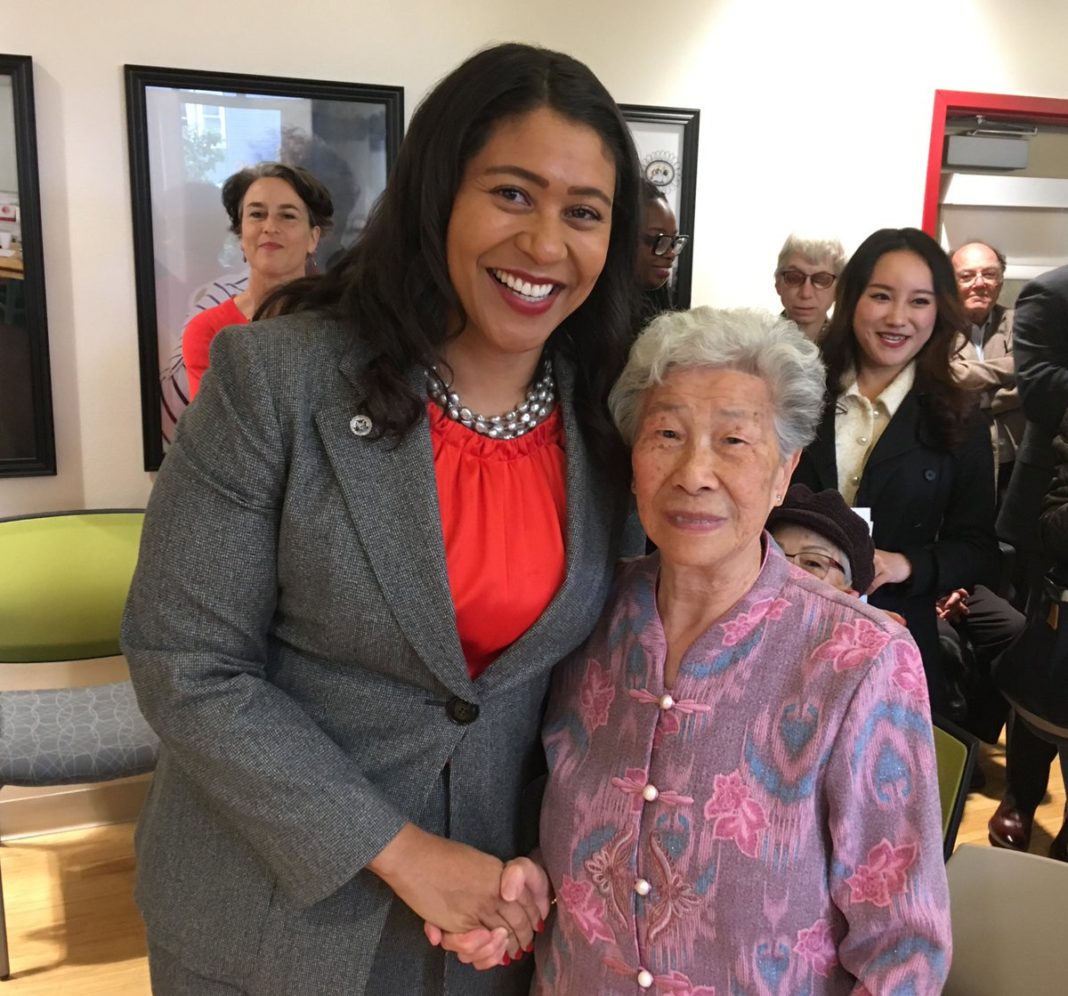SAN FRANCISCO—On Thursday, September 6, Mayor London Breed revealed the rehabilitation of 92 apartments for seniors and persons with disabilities at 990 Pacific Avenue. The project is the first in the Chinatown region to be renovated under the Rental Assistance Demonstration (RAD) program, aimed to preserving and revitalizing existing affordable housing.
Upgrades to the 990 Pacific Avenue location included seismic retrofit measures, upgrades to the interior of each individual unit, an improved community room, and enhanced common spaces.
“This is the first public housing in Chinatown to be renovated under the RAD program,” said Mayor Breed. “As someone who grew up in public housing, I can remember the mold, the leaky pipes, and the frequent times when the hot water was out. I am committed to continuing Mayor Lee’s legacy of preserving and renovating our public housing to make those conditions a thing of the past.”
According to the Mayor’s website, the U.S. Department of Housing and Urban Development’s RAD program, the ownership and management of 990 Pacific Avenue was transferred from the San Francisco Housing Authority to the non-profit Chinatown Community Development Corporation (Chinatown CDC). The change allows leverage local funds, tax credit financing, and private mortgages to upgrade the building.
“District 3 has the highest number of low-income seniors in the entire city,” said San Francisco Board of Supervisor Aaron Peskin. “Chinatown CDC has long recognized the link between stable housing and healthy communities where seniors can age in place with dignity. I have spent a lot of time with the tenants at 990 Pacific Avenue, and it’s a testament to the community’s trust in Chinatown CDC and the quality of coordination on behalf of the City that we have been able to successfully pull off this rehabilitation, including temporarily relocating seniors for the duration of the construction. I know they are very happy to be home.”
The Mayor’s Office of Housing and Community Development managed $9.54 million in city funds for pre-development and construction funding. The City is providing over $100 million in total funding to RAD programs and 1,620 units have been renovated to date.
“It’s exciting to see the beautiful results of this joint effort with Chinatown CDC, HUD, San Francisco Housing Authority and Bank of America to provide more than 100 seniors and people with disabilities with safe, high-quality, affordable apartments and essential on-site services,” said Kate Hartley, Director of the Mayor’s Office of Housing and Community Development.
The funding for the project was possible as a result of a $9.2 million tax-exempt construction loan provided by Bank of America Merrill Lynch, which invested $2.1 billion in total financing for RAD projects in San Francisco.
“This community at 990 Pacific was an integral part of Mayor Lee’s SF RAD vision, and Bank of America Merrill Lynch proudly invested $2.1 billion in financing into SF RAD, representing the nations and the bank’s largest affordable housing deal ever,” said Gioia McCarthy, San Francisco–East Bay Market President for Bank of America. “This financing directly helped with the relocation and support of the senior residents’ temporary living arrangements, and it’s notable that every single one of the residents returned – a testament to the Mayor’s vision, the resolve of the city to not displace our vulnerable populations, and the bank’s commitment to create vibrant communities.”
San Francisco’s RAD program provides tenant protections. Rents continue to be calculated at 30 percent of income, there is no re-screening for current residents, and there is a right to return for residents who may need to relocate temporarily while their units are renovated. For this project, residents were placed in other buildings during the construction process and continued to receive services in these temporary locations.
“By transforming 990 Pacific Ave, we are ensuring that the elderly and people with disabilities can stay in their homes and have access to health and social community resources, maintain their network of friends, and eat and shop right in their neighborhood. As part of the rehab, we even created an exercise room for the residents so they don’t have to travel far to stay fit,” said Norman Fong, Executive Director of Chinatown CDC.
Written By Casey Jacobs






